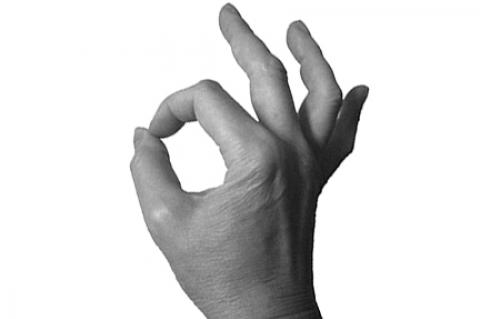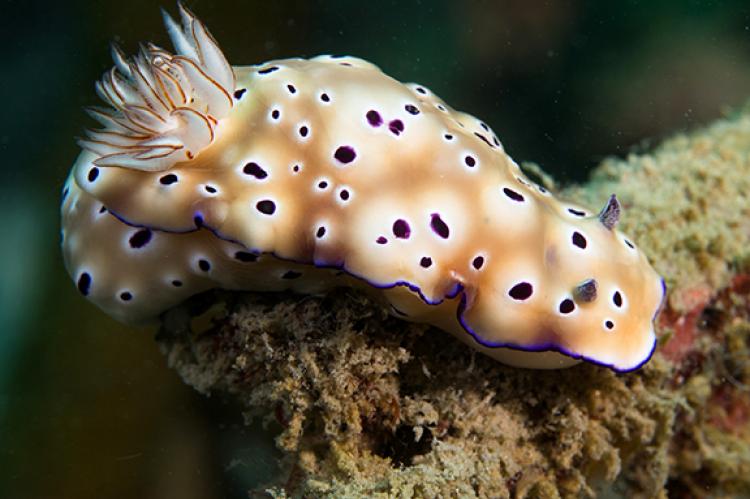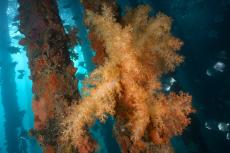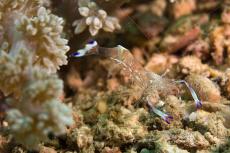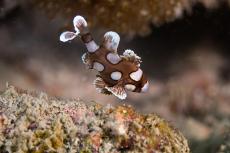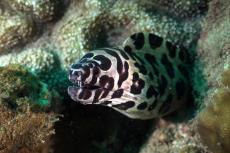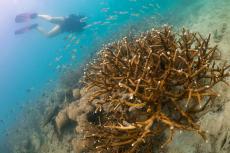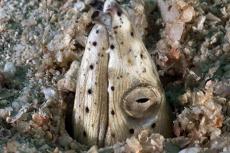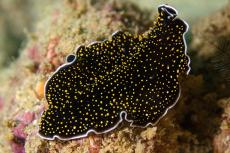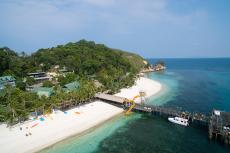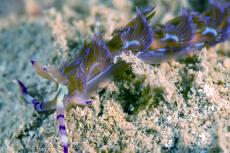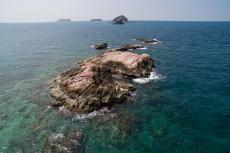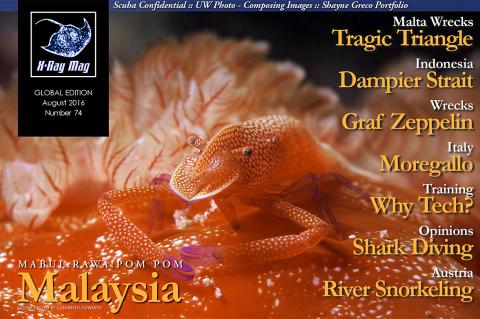Malaysia's Pulau Rawa
Located just a 20-minute speedboat ride from the coastal town of Mersing in Malaysia, Pulau Rawa offers a great alternative for those looking for a mixture of diving, beach time, relaxation and who just want to get away from it all.
Malaysia is by far one of the most popular destinations in Southeast Asia to dive. It is home to world-class dive sites such as Sipadan Island, famous for its schooling fish, sharks and turtles; the islands around Mabul and Kapalai for their muck diving and strange critters; and the tiny island of Layang Layang for its schooling hammerhead sharks.
Some locations are also becoming more and more popular with backpackers and travellers looking to learn to dive. Places like Tioman and the Perhentian Islands are home to some great diving, and are the ideal locations to complete entry-level dive courses or for experienced divers to kick back and relax.
These places are great for divers looking for a real adventure and some amazing diving, but some are a little off the beaten track or have nothing for the non-divers in your group. Not everyone wants to spend days travelling to remote areas, or to go to places where all you can do is dive, dive ... and dive. For these folks, Pulau Rawa is an attractive option.
About the island
Pulau Rawa island is very popular with families coming from Singapore (and Kuala Lumpur) for the weekend, as it is only a two- to three-hour drive (depending how long it takes to get over the border) it is easily accessible as a place to spend a few days away from the city. For those with families and young children, there is plenty to keep the little ones occupied, with beautiful white sandy beaches, slides going into the ocean and even a kid's play room. Grown-ups are not left out either, with a beach bar and spa onsite, where one can get those all-important massages.
Arriving on the island, you are greeted by turquoise blue water, perfect white sandy beaches and the wooden bungalows of Rawa Island Resort nestled into the hill. The beautifully manicured resort and relaxed atmosphere make you feel at home right away, with the sounds of birds and fruit bats filling the air, including the sounds of the free-roaming peacocks that are found all over the island!
The island is small, so it won’t take too long to explore it all—with most of what there is to see concentrated along the western side of the island. There are no roads, shops or restaurants except for those in the resort. But for folks who are more adventurous, there is a short island trek to the top of the hill where hikers are treated to a spectacular view from its highest point. It is here that one gets a chance to see the rugged exposed cliffs of the eastern side of the island, dropping down into the crystal blue water.
Diving
Pulau Rawa is located in the Sultan Iskandar Marine Park, set up in 2013 to help protect the local marine environment. A small marine park fee of around US$15 per day is charged to divers to help fund the protection of the marine park and can be paid in Mersing before leaving for the island. At the time of writing, the local marine department was in the process of reviewing the fees.
There is only one dive operator on the island—Orca Scuba. Based in Singapore, they have teamed up with Rawa Island Resort to create Orca Scuba Rawa. The operator’s main focus from the start has been to introduce families and children to the world of scuba diving and to provide the highest level of professionalism and safety possible.
For those in Singapore who wish to learn to dive, they can complete the theory and pool sessions in Singapore before getting to Pulau Rawa, saving precious holiday time. Once on the island, the operator’s team of instructors can offer a wide range of PADI courses and programmes for ages eight and up, meaning that even the littlest in the family won’t miss out!
House reef. Diving on the island is mainly done by shore entry, with some boat drop-off dives too. All along the western side of the resort, there is a beautiful house reef, which is long enough to take three or four dives to see it all. The shallow depth of the house reef, with a maximum depth of around 12m, makes it perfect for dive training and try-dives, or for experienced divers to do long, slow relaxing dives. My record on the house reef is over 90 minutes, slowly swimming alongside the stunning coral reef.
Northern and southern end. If you are looking to do a little more exploring, you can get a boat drop-off round the northern or southern tips of the island. The journey only takes five to ten minutes, and you are then free to slowly swim back towards the house reef. On these dives, you can reach depths of up to 21m, and the topography changes from the shallow straight house reef, to more dramatic boulders and coral heads.
The conditions are usually very calm and relaxing, with gentle currents, if any, with good visibility reaching over 20m on a good day. My favourite dive is off the northern end of the island—close to where Orca Scuba’s dive centre is located—where I have seen both green and hawksbill sea turtles, and even groups of juvenile blacktip reef sharks. The corals at this end of the island are incredibly healthy and are completely undamaged, as there has been almost no human influence on the area.
Marine life
The marine life around the island is very varied. Around the jetty on the house reef, you will find huge schools of batfish, saltwater perch and silversides. While exploring in the sand, I have found large crocodilefish waiting to ambush their next meal, and the bizarre-looking and poisonous Indian walkman, also known as the demon stinger or devil stinger, which is closely related to stonefish.
For nudibranch lovers, keep your eyes peeled and you will be in luck. I have seen various species of nudibranchs, from tiny Chromodoris to long fluffy-looking purple dragon nudibranchs—there are so many, in fact, that one of the dive sites has been named Dragon Rock for its high number of these little purple critters.
I have also never seen so many juvenile harlequin sweetlips in one place. For those who have never seen one before, when they are in their juvenile form, they are about the size of your small fingernail and move around so fast that they almost look as if they are vibrating their way along the reef rather than swimming. It is commonly said that they do this to mimic a poisonous flatworm so as to avoid being eaten by predators.
During my first walk along the beach, I noticed a large number of bright white cuttlebones, hinting that there would be plenty of cuttlefish on the reef. At certain times of the year, they are indeed everywhere!
Pipefish, and sometimes even seahorses if you are lucky, can be found in the sand just off the reef, as well as mantis shrimp hiding out in small holes on the seabed. While exploring the sandy areas, keep an eye out for stingrays hiding underneath a thin layer of sand. These little rays are all over the place and sit silently, with just their eyes and tail visible. Get too close, and they disappear in a puff of sand into the distance.
Look up and you may see schools of barracuda and fusiliers above you. I was also told stories that divers on a neighbouring island have seen dugongs nearby, making me spend most of my dives staring out into the open water to get a glimpse of one of these bizarre gentle giants, but with no luck.
About the resort
Rawa Island Resort offers full-board accommodation, with all of your food and drinking water included in the price of your room. Meals are served buffet-style, and the cuisine is absolutely delicious. I usually find myself needing a kilo or two less on my dive belt towards the end of my stay after being weighed down by all the food! Drinks can be purchased from either the main bar or beach bar, depending on the time of day, and there is a small gift shop selling souvenirs, sunscreen and other things like beach toys.
For the non-divers, there are a number of watersports offered, including snorkelling, sailing, kayaking and standup paddle boarding, with equipment to rent by the hour on the beach. An around-the-island kayaking trip is a great way to explore a little more.
For the divers, the dive centre has high-quality equipment rental, so there is no need to bring your own if you want to travel light. It is advisable to book your dives ahead of time to avoid disappointment when you get to the island, as their time slots can fill up on busier weekends, especially for those wanting to complete courses.
Diving conditions
Diving on the island is best between March and November. Between November and February, the northeast monsoon kicks in, making the diving conditions less than desirable, with poor visibility, strong currents and large waves—a stark contrast from the clear, calm blue waters you find during the rest of the year. As soon as the wind changes back, the perfect conditions return, and the diving is great once again. The resort occasionally closes over this monsoon period to upgrade and perform maintenance on the rooms, when all diving ceases completely.
Pulau Rawa is, for me, the ideal location for a quick getaway from Singapore. There are not many dive locations of this quality so close where you can leave first thing in the morning and be diving before lunch; it is perfect for a long weekend of diving and an escape from the bustle of the city. ■
The author wishes to thank the amazing staff at Orca Scuba Rawa, and Rawa Island Resort for their continued hospitality. Nick Shallcross is a British underwater photographer and dive writer based in Singapore. He offers tailor-made workshops and courses in underwater photography. For more information, visit: NickShallcrossPhotography.co.uk.
SOURCES:
Orca Scuba Rawa (www.orcascuba.com/orca-scuba---pulau-rawa.html)
Rawa Island Resort (www.rawaislandresort.com)
Sultan Iskandar Marine Park
(www.johorparks.com.my/ms/products/publication/190-sultan-iskandar-marine-park)
Wikipedia (http://en.wikipedia.org/wiki/Inimicus_didactylus)
Download the full article ⬇︎
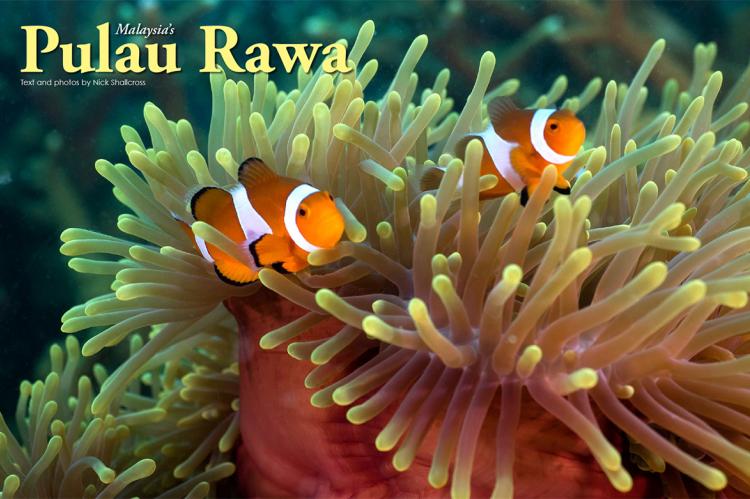
Originally published
X-Ray Mag #74
Malaysia's Mabul Island, Pulau Rawa and Pom Pom Island; Indonesia's Dampier Strait; River snorkeling in Austria; Italy's submerged machines at Moregallo; The Graf Zeppelin wreck; U-Boat Navigator explores wrecks of Malta; Scuba Confidential: Choose Wisely; To shark dive or not to shark dive; Composing images underwater; Shayne Greco portfolio; Plus news and discoveries, equipment and training news, books and media, underwater photo and video equipment, shark tales, whale tales and much more...

